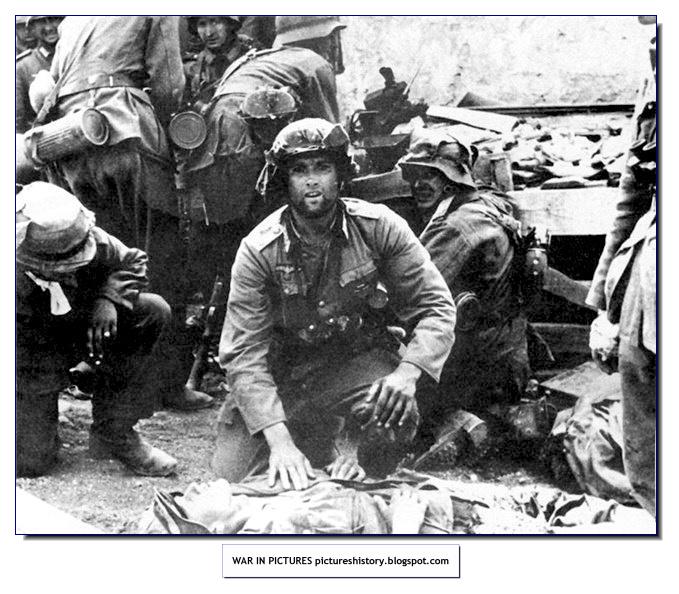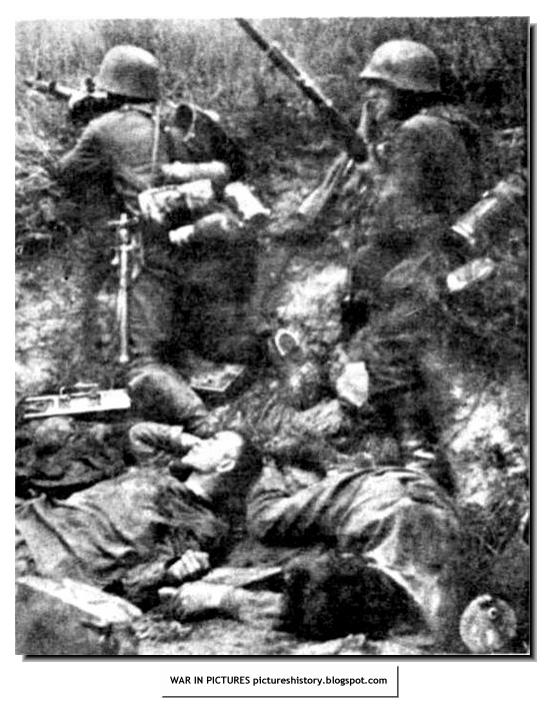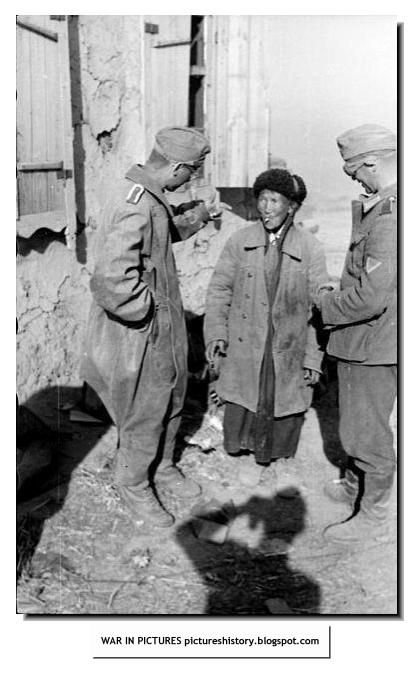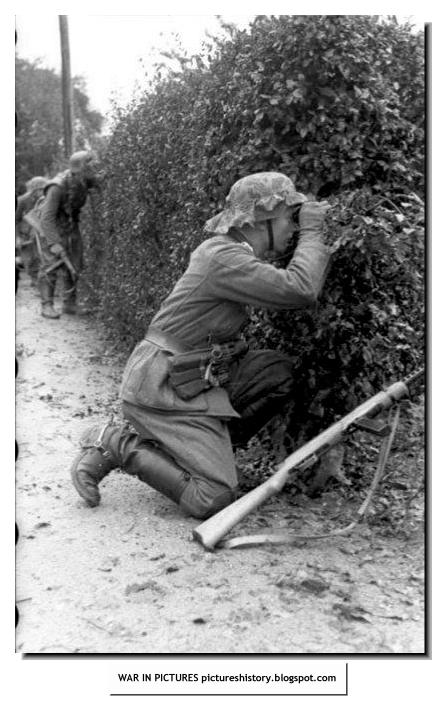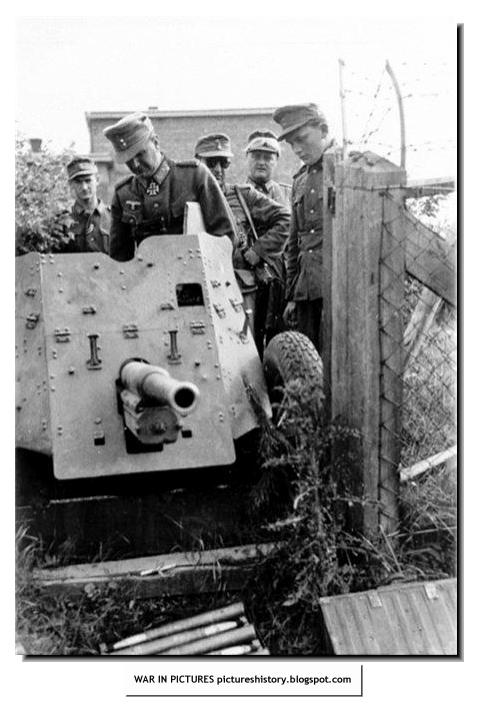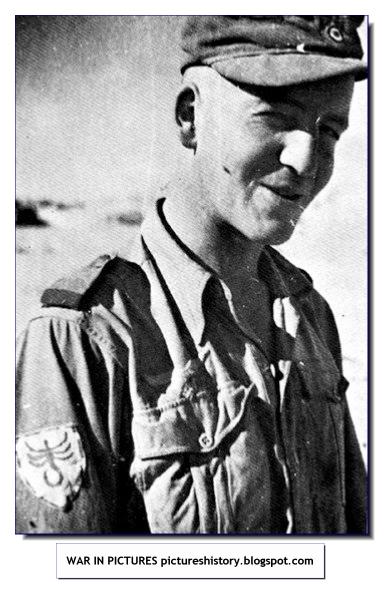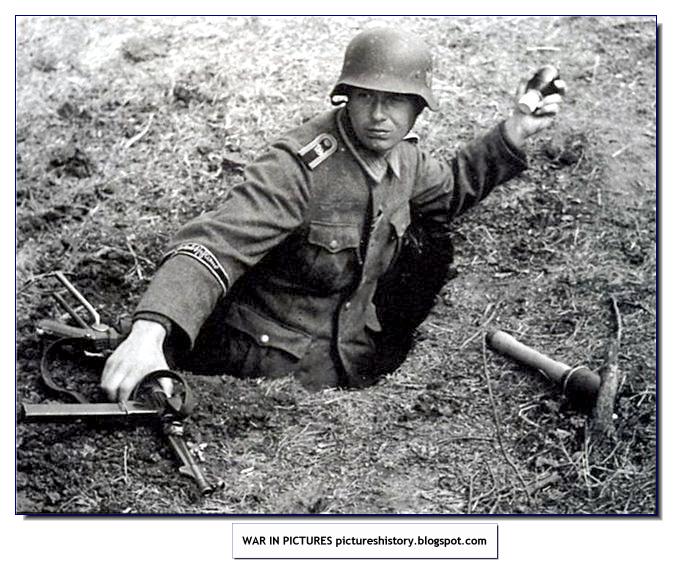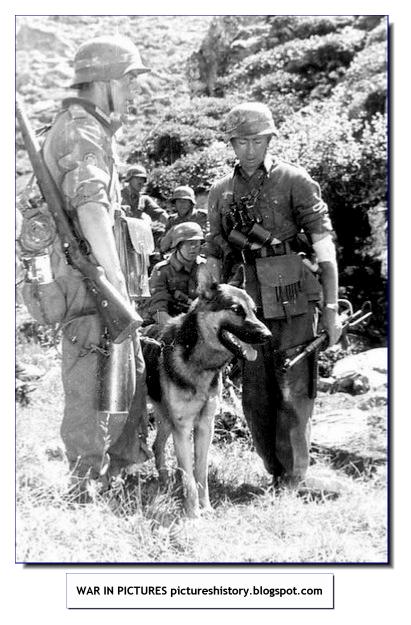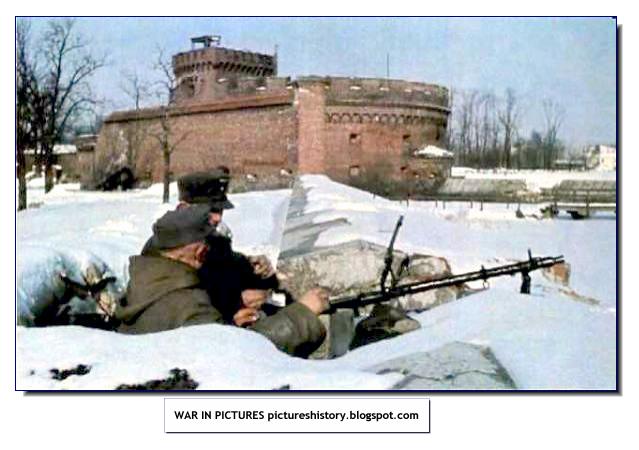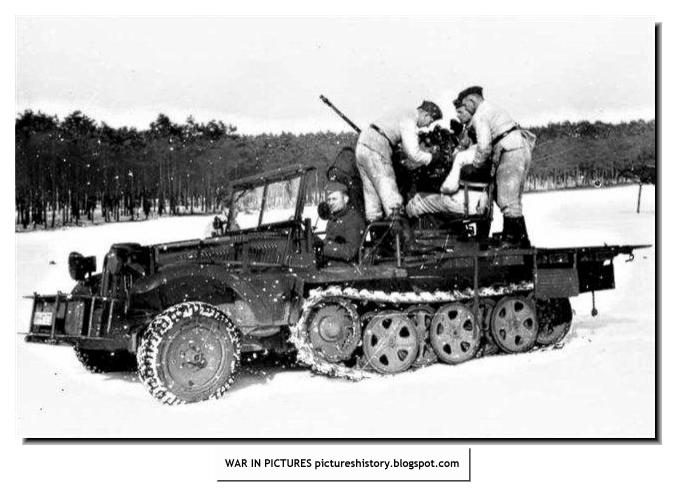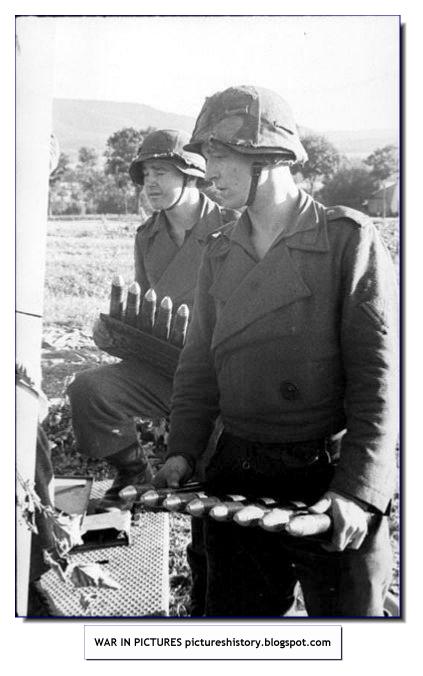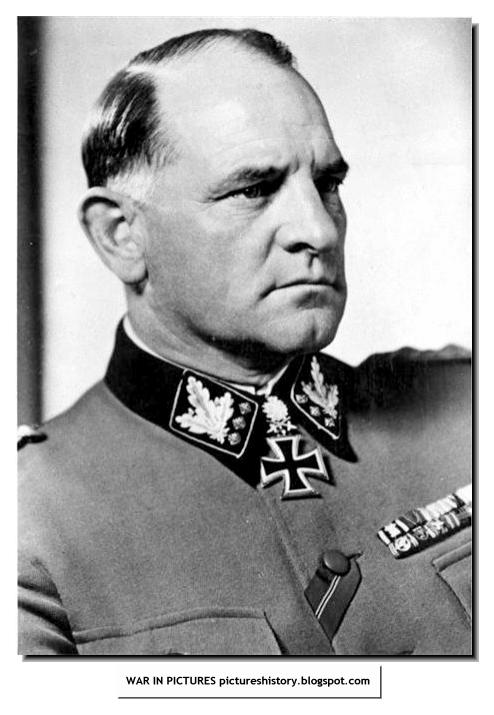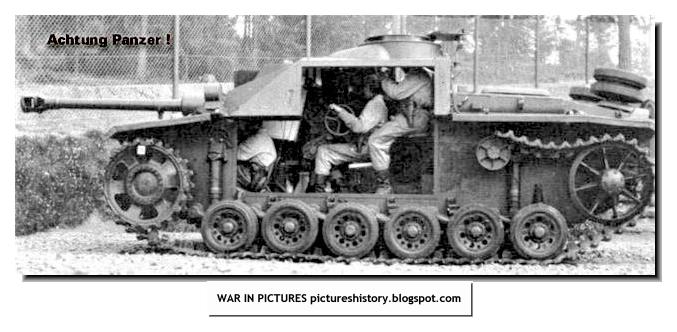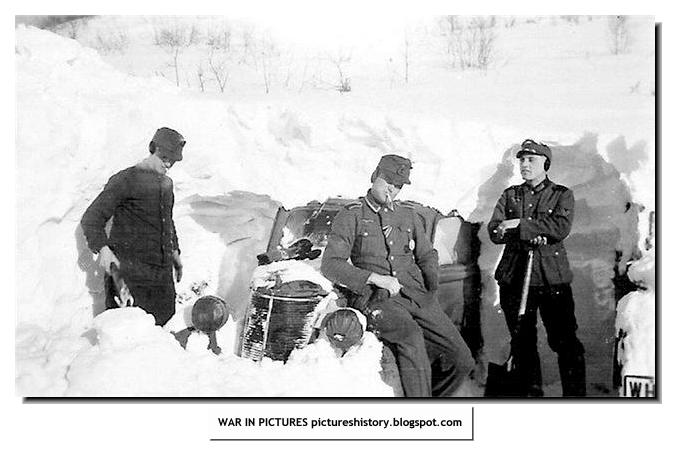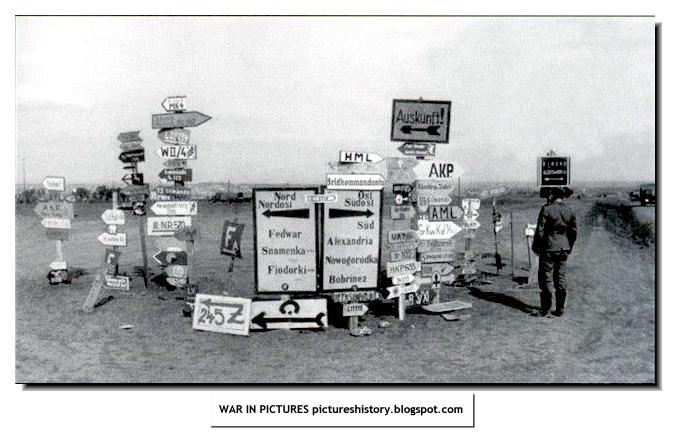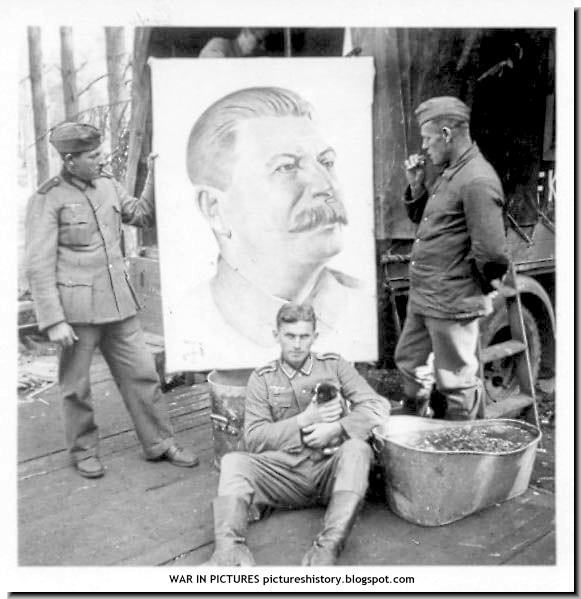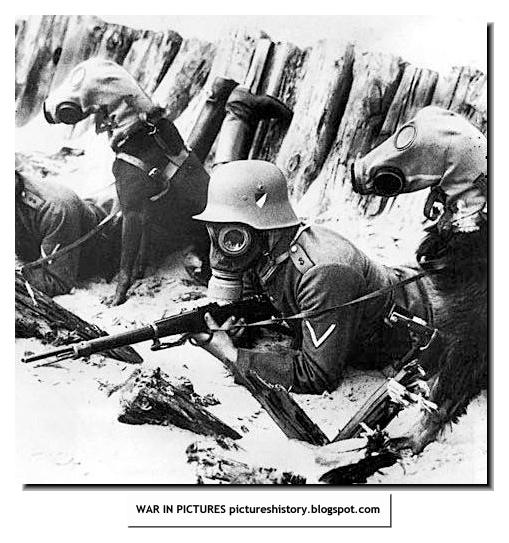Anti-aircraft tank Flakpanzer 1
A warning sign to be careful of Russian partisans
Grim reality of war
A German soldier lights a Molotov cocktail
Germans chat with a local in the USSR
The Third Reich was fighting the war with boys like these in March 1945
A German on a BMW motorcycle
Near Brest fortress
A German general inspects a captured Soviet anti-tank gun
Inspection in the Wehrmacht
Checking the men of the artillery
These men are moving with a column of Tiger-2 tanks
Optical communication by the German army
General Richthofen consults his advisers
Generalfeldmarschall Wolfram Freiherr von Richthofen (10 October 1895 Barzdorf – 12 July 1945) was a German Field Marshal General of the Luftwaffe during World War II.
Von Richthofen was fourth cousin of the German World War I flying ace Manfred von Richthofen, popularly known as the "Red Baron," and the baron's younger brother Lothar von Richthofen.
More At Wikipedia
MORE WEHRMACHT IMAGES
A warning sign to be careful of Russian partisans
Reich Marshal Goering, in a conversation with Herbert Backe
WHO WAS HERBERT BACKE?
Herbert Backe (1 May 1896 – 6 April 1947) was a German Nazi politician and Obergruppenführer in the SS.
He was born in Batumi, Georgia. He performed a variety duties in the Third Reich government, succeding Richard Walther Darré as Minister of Food in May 1942 and as Minister of Agriculture in April 1944, and, during the war, was proposed by Alfred Rosenberg as administrator of Ukraine. Backe was one of the orchestrators of the Hunger Plan, the plan to starve millions of Slavs in order to ensure steady food supplies for the German people and troops.
Backe was a prominent member of the younger generation of Nazi intellectuals who occupied second tier positions in the Hitlerian system, such as Reinhard Heydrich, Werner Best, and Wilhelm Stuckart. Like Stuckart, who held most effective power in the Interior Ministry (officially led by Wilhelm Frick), Backe was the de facto Minister of Agriculture, under Richard Walther Darré, even before Hitler appointed him as such.
He continued to hold his Ministerial positions in the ephemeral government led by Admiral Karl Dönitz in the last days of World War II, from late April to May 1945, as according to Hitler's political will. After the war officially ended, he was captured by the Allies together with the rest of the government, and was to face the Ministries Trial. However, he hanged himself in his cell on 6 April 1947.
He was born in Batumi, Georgia. He performed a variety duties in the Third Reich government, succeding Richard Walther Darré as Minister of Food in May 1942 and as Minister of Agriculture in April 1944, and, during the war, was proposed by Alfred Rosenberg as administrator of Ukraine. Backe was one of the orchestrators of the Hunger Plan, the plan to starve millions of Slavs in order to ensure steady food supplies for the German people and troops.
Backe was a prominent member of the younger generation of Nazi intellectuals who occupied second tier positions in the Hitlerian system, such as Reinhard Heydrich, Werner Best, and Wilhelm Stuckart. Like Stuckart, who held most effective power in the Interior Ministry (officially led by Wilhelm Frick), Backe was the de facto Minister of Agriculture, under Richard Walther Darré, even before Hitler appointed him as such.
He continued to hold his Ministerial positions in the ephemeral government led by Admiral Karl Dönitz in the last days of World War II, from late April to May 1945, as according to Hitler's political will. After the war officially ended, he was captured by the Allies together with the rest of the government, and was to face the Ministries Trial. However, he hanged himself in his cell on 6 April 1947.
Grim reality of war
A German soldier lights a Molotov cocktail
Germans chat with a local in the USSR
The Third Reich was fighting the war with boys like these in March 1945
Germans looking forward to a feast of tinned Russian food
A German on a BMW motorcycle
Near Brest fortress
A German general inspects a captured Soviet anti-tank gun
Inspection in the Wehrmacht
Checking the men of the artillery
These men are moving with a column of Tiger-2 tanks
Optical communication by the German army
General Richthofen consults his advisers
Generalfeldmarschall Wolfram Freiherr von Richthofen (10 October 1895 Barzdorf – 12 July 1945) was a German Field Marshal General of the Luftwaffe during World War II.
Von Richthofen was fourth cousin of the German World War I flying ace Manfred von Richthofen, popularly known as the "Red Baron," and the baron's younger brother Lothar von Richthofen.
More At Wikipedia
MORE WEHRMACHT IMAGES





